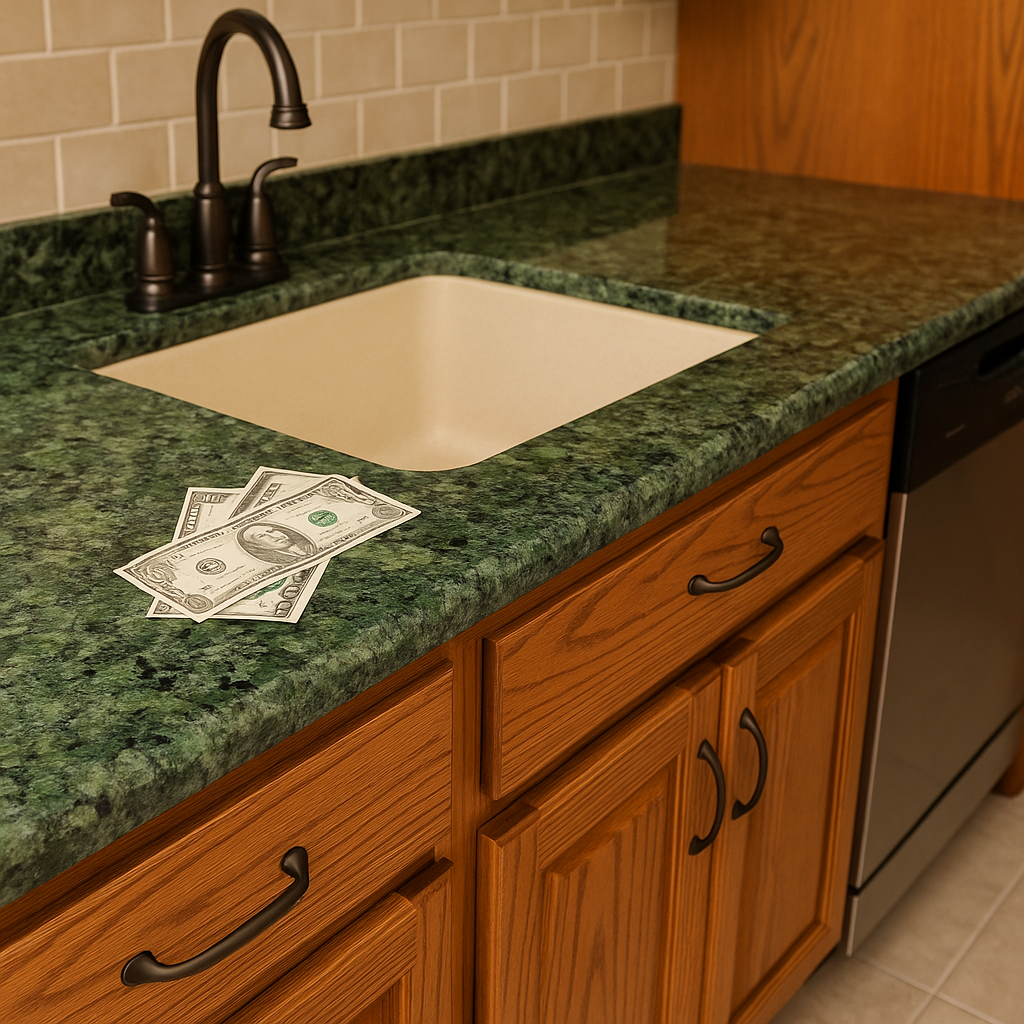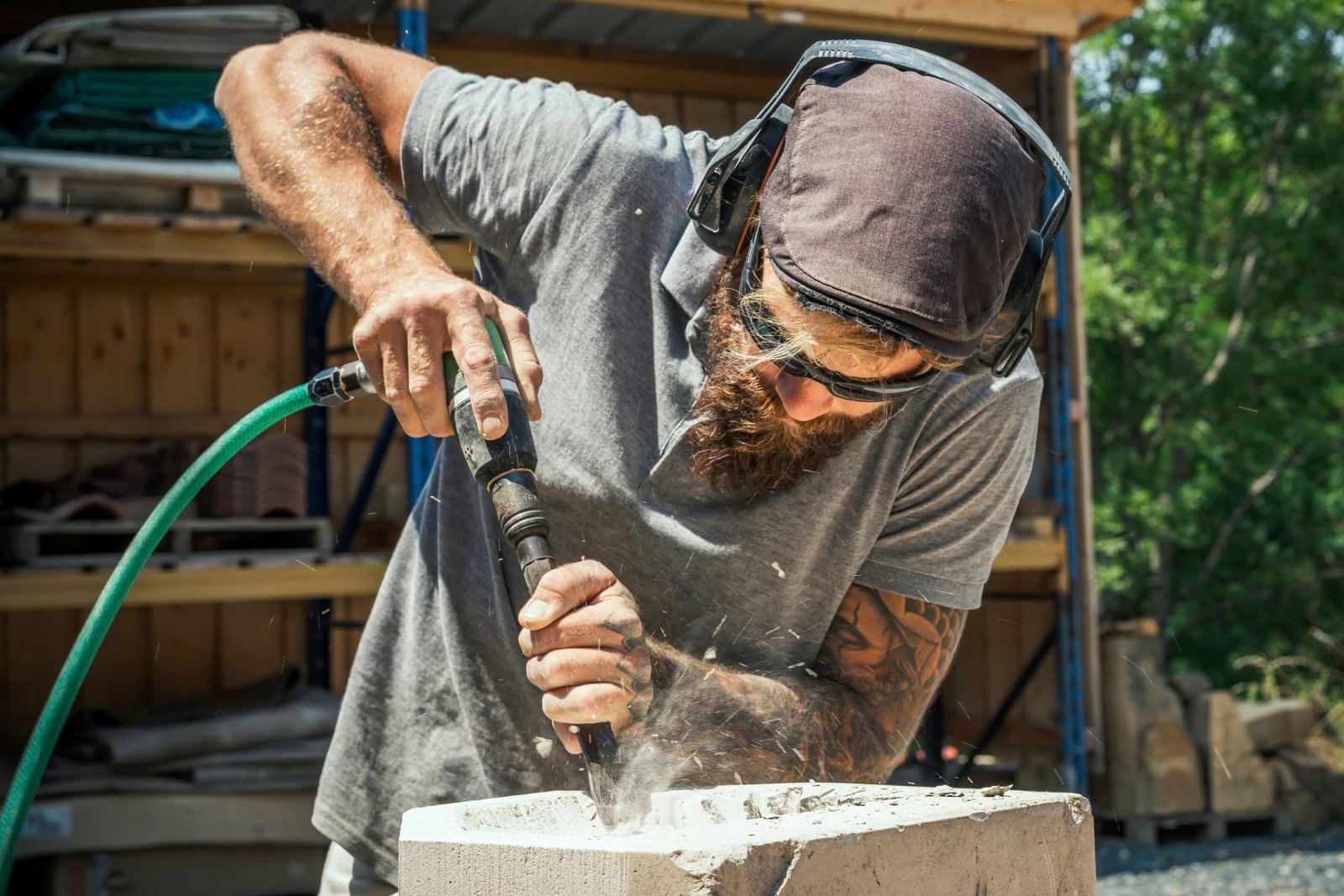
A granite countertop is one of the most desirable features in modern kitchen and bathroom design.
A granite countertop is one of the most desirable features in modern kitchen and bathroom design. It’s known for its natural beauty, incredible durability, and long-lasting value. However, granite can come with a significant price tag—especially if you’re not strategic during the selection and installation process.
The good news? With smart planning and informed choices, you can enjoy all the benefits of a granite countertop without overspending. This guide outlines expert-backed tips to help you save money on granite slabs, installation, maintenance, and upgrades—without sacrificing quality or design.

Why Granite Countertops Are Worth the Investment
Before we dive into money-saving tips, let’s address why granite is such a smart long-term choice:
- Scratch- and heat-resistant: Perfect for kitchens and high-use surfaces
- Natural stone elegance: Each granite slab is unique
- Adds property value: Homebuyers love natural stone
- Low maintenance: Sealed granite is easy to clean
- Longevity: Lasts 30+ years with proper care
👉 What Makes a Granite Countertop a Smart Investment?
1. Choose a Common Color or Locally Available Granite
Granite countertop prices can vary widely based on the color, pattern, and country of origin. Exotic or rare stones like Blue Bahia or Van Gogh are beautiful—but come at a premium.
Tip:
- Select granite colors that are readily available, such as Ubatuba, Santa Cecilia, or New Caledonia.
- Choose stone sourced locally or from nearby quarries to reduce transportation costs.
Locally available granite can cost 30%–50% less than imported exotic slabs.
2. Opt for Standard Edge Profiles
Edge detail plays a big role in your final cost. While ornate edges like ogee or waterfall are elegant, they require extra fabrication labor.
Tip:
- Choose standard edges such as eased, beveled, or bullnose.
- Avoid multi-layered or laminated edges unless needed for visual thickness.
Simple edges still look beautiful and help reduce the overall fabrication cost.
3. Use a Thinner Slab (When Structurally Appropriate)
Granite typically comes in 2 cm (¾ inch) or 3 cm (1¼ inch) thicknesses. Thicker slabs are stronger—but also more expensive and heavier to install.
Tip:
- If your kitchen countertop or vanity is well-supported, a 2 cm slab may be sufficient.
- Use a laminated edge to give the illusion of a thicker slab.
Discuss with your installer whether a thinner slab will work structurally to save money.
4. Buy Remnants for Smaller Projects
If you’re installing granite in a bathroom, laundry room, or small bar area, consider buying remnant granite slabs—leftover pieces from larger jobs.
Advantages:
- Often 50–75% cheaper than full slabs
- Ideal for smaller applications or custom shelves
- Still comes in high-quality stone and finishes
Fabricators often sell remnants at a discount, and some even offer free sink cutouts or polishing with purchase.
5. Limit the Number of Cutouts and Seams
Each cutout for sinks, cooktops, or faucets increases labor and risk, which drives up cost. Seams also require more time to finish and color-match.
Tip:
- Opt for drop-in sinks instead of under-mount to simplify cutting.
- Consolidate plumbing fixtures to reduce holes.
- Design a layout that uses fewer seams by optimizing slab dimensions.
Reducing fabrication complexity saves both time and money.
6. Compare Installers and Ask for Package Deals
Countertop installation costs vary based on experience, equipment, and services offered. Don’t go with the first quote you receive.
What to Look For:
- Ask for all-inclusive packages (templating, delivery, install, sealing)
- Request quotes from at least three granite fabricators
- Negotiate pricing during off-season (typically winter months)
Some companies also offer free upgrades to premium finishes or edges to win your business.
7. Avoid Granite That Requires Frequent Repairs
Lower-quality granite may crack or stain more easily, leading to ongoing granite countertop repair expenses.
👉 How Can You Identify a Premium Granite Countertop from a Lower-Grade One?
Tip:
- Invest in mid-grade or high-grade granite upfront to avoid problems later
- Choose granite with low porosity and a quality factory polish
Remember: cheaper granite isn’t cheaper if it needs to be repaired or replaced in a few years.
8. Keep Your Design Simple
Granite countertops shine even with basic design choices. Over-complicating the layout, angles, or finishes will increase fabrication costs.
Money-Saving Layouts:
- Use straight lines instead of curves
- Avoid double islands or complex multi-height surfaces
- Stick to standard widths and depths
The simpler the installation, the lower your final bill.
9. Maintain Granite Properly to Avoid Damage
After installation, protect your investment with proper granite countertop maintenance to avoid premature wear.
Daily and Annual Tips:
- Wipe spills immediately to avoid staining
- Use trivets and cutting boards to prevent damage
- Reseal every 12–18 months for optimal protection
- Clean with non-abrasive, pH-neutral products
Spending a little on maintenance now avoids costly granite countertop cleaning or refinishing later.
10. Consider Mixing Materials Strategically
You don’t need to use granite on every surface. Mixing in butcher block, quartz, or tile in less-visible areas helps reduce total costs.
Hybrid Layout Ideas:
- Granite on the island, laminate on perimeter
- Granite for cooking prep zones, quartz elsewhere
- Remnants or tile backsplashes paired with granite
This approach balances beauty and budget without compromising function.
Final Thoughts: Enjoy Granite Without Overspending
A granite countertop doesn’t have to break the bank. By choosing wisely—color, thickness, layout, and installer—you can enjoy the timeless look and unmatched durability of granite while sticking to your renovation budget.
Smart decisions during planning and countertop installation deliver both aesthetic results and long-term savings. Granite remains one of the best surface materials available—and with these tips, it can be one of the most affordable too.

